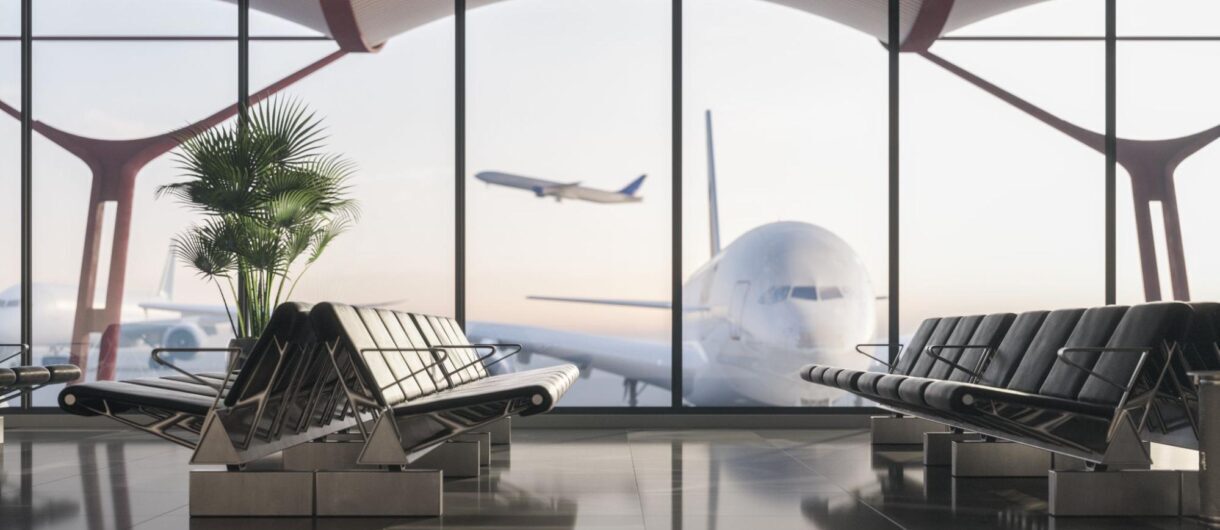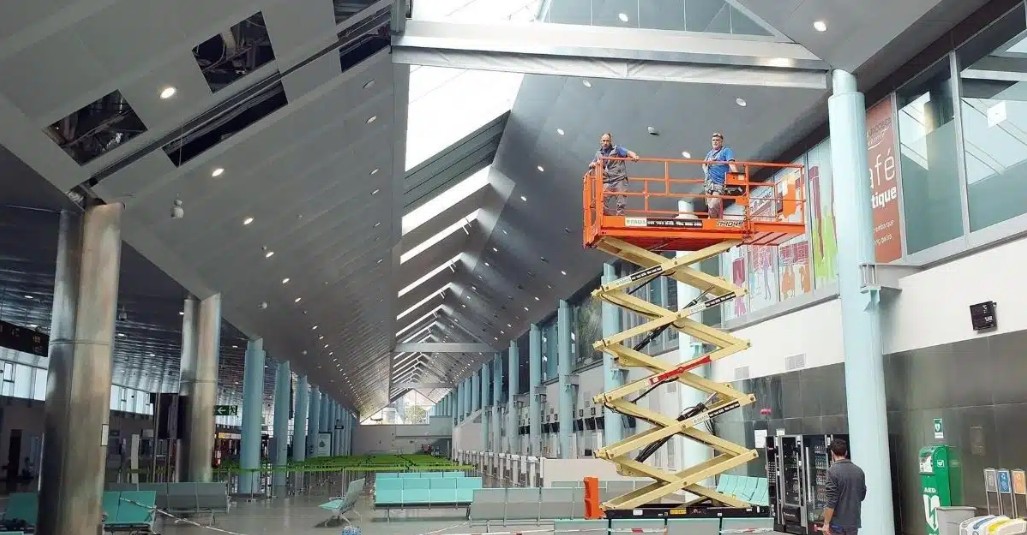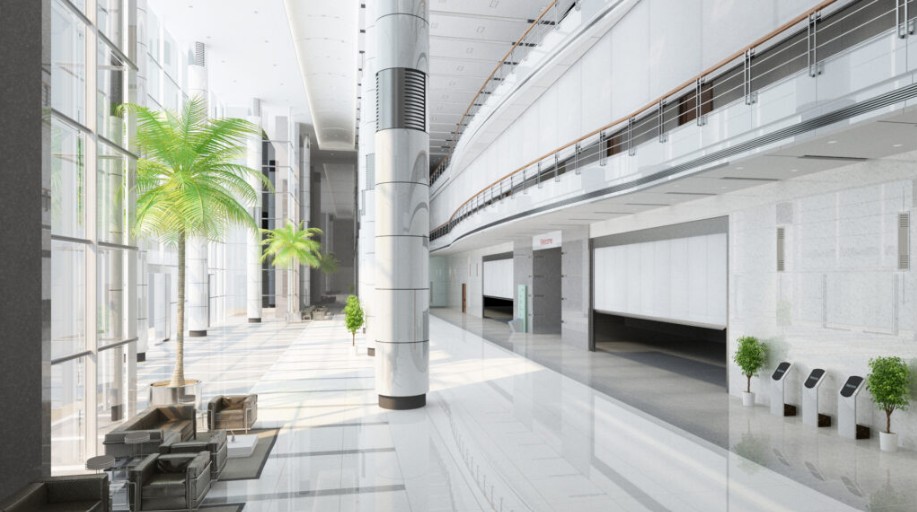
Fire protection in airports: how to implement effective compartmentalization
Airports are complex infrastructures where fire protection plays a crucial role. In these facilities, the risk lies not only in the hazardous materials handled but also in the high density of people and the constant movement of aircraft. In this article, we will delve into the specific challenges, and how compartmentalization, especially with fire curtains and smoke control curtains, becomes a key solution to ensure safety.
Risks and critical areas in airports
Airports present a combination of high-traffic areas and highly specialized technical zones, requiring passive protection solutions adapted to each environment, taking into account the specific characteristics of each space. Compartmentalization must consider both the functional requirements of each space and the local fire safety and building codes, which vary by country and jurisdiction.
Below, we break down the areas that require the most attention when developing a fire protection plan.
Passenger terminals
Passenger terminals are the nerve center of any airport, designed to handle large flows of people. Their high occupancy density and the diversity of activities, such as check-in, security checks, boarding, and waiting areas, make them particularly vulnerable to fires.
The risk in these spaces primarily stems from their open architecture, designed to facilitate the continuous flow of people. This design, while essential for airport operations, also allows smoke and heat to spread quickly in the event of a fire, hindering containment and evacuation efforts. Additionally, the use of combustible materials in the infrastructure, such as luggage, furniture, and products stored in commercial areas (textiles, aerosols, or plastics), multiplies the chances of uncontrolled fire spread.
The high occupancy density in terminals amplifies the risk, as these areas are designed to accommodate hundreds or even thousands of people simultaneously. In emergency situations, such as a fire, this concentration can slow down evacuation processes and increase exposure to smoke and heat, which poses a significant danger to human life.
Another critical aspect is the air conditioning systems, present throughout the terminal, which serve as an additional risk point. The accumulation of dust in the ducts, overheating of the motors, or technical failures can become ignition sources that quickly spread the fire through these facilities.

Airport sectorization with Tecnitex
To mitigate these risks, the installation of fire curtains in passenger terminals is a key measure. In newly constructed or recently renovated airports, fire curtains can reach considerable dimensions due to the more open and modern design of the infrastructure. This means that installation must be meticulously planned, as these curtains require prior testing to verify their performance under the parameters established in official tests.
Technical areas
Technical areas, such as air traffic control centers and server rooms, are the operational core of the airport. These spaces concentrate critical electronic equipment, including communication systems, generators, and servers, which are extremely sensitive to fire and smoke.
Although both areas fall under the “technical” category, they differ significantly in terms of occupancy, configuration, and ease of evacuation. Air traffic control centers, for example, are typically more open spaces, with highly specialized personnel working in continuous shifts. These spaces prioritize constant operability, so any incident, such as a fire or smoke buildup, can disrupt not only the internal operations of the airport but also those of aircraft in the air, directly affecting the safety of passengers and crews. Evacuating these spaces, although possible, must be carefully planned to avoid disrupting operations.
On the other hand, server rooms have a completely different configuration. These are closed areas with a high concentration of electronic equipment sensitive to heat and smoke, but with little to no constant human occupancy. The main challenge in these spaces is not so much the evacuation of people, but the rapid containment of fires to avoid the loss of critical data or disruption of the airport’s communication systems. Additionally, the design of these rooms requires specific solutions such as fixed fire curtains that can deploy quickly without compromising access to technical equipment during maintenance.
To ensure safety in these areas, compartmentalization must focus on containing the fire and minimizing the impact on critical infrastructure. In most cases, fire curtains are mandatory in these areas, while smoke curtains may be required depending on the ventilation system design and applicable regulations. In air traffic control centers, compartmentalization solutions must be designed to activate without obstructing visibility or compromising the accessibility of operational personnel, ensuring a controlled evacuation if necessary.
Maintenance hangars
Hangars are spaces designed for technical operations and maintenance of aircraft. These areas combine intensive use of fuels, lubricants, and heavy machinery, making them one of the highest fire-risk environments within an airport.
Generally, hangars are located in the peripheral areas of the airport, away from passenger terminals and main runways, to minimize the impact of any incident on overall operations. These spaces are typically large and open, with high ceilings to accommodate large aircraft and specialized machinery. However, their design presents significant challenges in fire prevention, as the large dimensions and open layout can facilitate the rapid spread of fire and smoke if adequate compartmentalization is not implemented.
The loading platforms and fuel supply areas within the hangars are critical points. Accidental kerosene spills or chemical leaks can create flammable atmospheres that, when exposed to a spark, could trigger large-scale fires or explosions. Additionally, the presence of heavy machinery and metal structures complicates the rapid evacuation of personnel, as well as emergency teams’ access in the event of an incident.
Unlike passenger terminals and technical areas, hangars more commonly feature smoke curtains, as they play a key role in containing gases and maintaining visibility in the event of a fire. Since these spaces are not designed for the constant transit of passengers, fixed smoke control barriers are the most effective solution, as they allow smoke to be contained in specific zones, facilitating evacuation and emergency intervention.
The installation of these barriers must take into account the arrangement of ventilation and smoke extraction systems, ensuring their integration with active fire protection systems. In large hangars, compartmentalization must be planned based on precise structural calculations to avoid interference with aircraft movement and access for technical personnel.
What is compartmentalization and why is it essential in airports?
Compartmentalization is a passive fire protection technique used to limit the spread of fire and smoke in critical infrastructures like airports. It involves dividing spaces into independent sectors using physical barriers such as fire curtains and smoke barriers, with the aim of containing a fire at its origin and minimizing its impact. It is important to note, as previously mentioned, that compartmentalization must be adapted to the regulations in each country, as building codes may specify requirements for the installation of containment barriers. Not all areas require the same type of curtain, nor are all solutions equally applicable to different spaces within an airport. In some cases, fire curtains may be mandatory, while in others, smoke barriers may be the most suitable solution depending on the airport’s architectural and operational design.
Advantages of Tecnitex solutions in airports
Tecnitex fire curtains and smoke barriers are designed to meet the requirements and characteristics of airports, offering solutions that combine functionality, safety, and aesthetics. Their flexible design allows them to be adapted to any architectural configuration, facilitating their integration into complex or unique projects. Additionally, their discretion ensures that they remain invisible until activation, preserving the aesthetics and natural flow of the spaces.
One of their major advantages is that they allow for compartmentalization without losing valuable usable space, unlike traditional fire walls that take up valuable square meters. The lightness of the curtains, made from technical fabrics like fiberglass, not only minimizes the building’s structural load but also enables architects to eliminate non-load-bearing fire walls and other elements, facilitating the creation of more open and versatile spaces.
The Tecnitex product range complies with industry standards. In the case of fire curtains, they meet the EN 1634-1 standard, while smoke barriers are certified according to the UNE EN 13501-1 classification A2 s1 d0. Furthermore, these solutions have been tested to exceed 1,000 operating cycles and provide smoke impermeability under 25 Pa pressure (0.003 m³/h), ensuring maximum safety in critical situations.
If you have a new airport project and want to learn more about compartmentalization solutions, do not hesitate to contact us.
